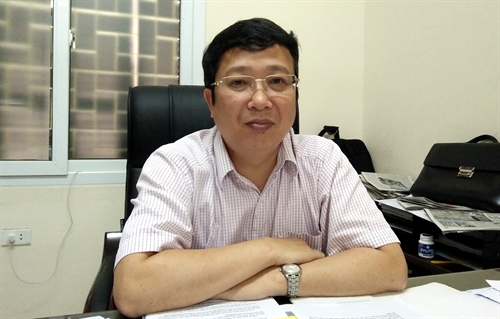 Opinion
Opinion

Hoàng Trung, head of the Plant Protection Department under the Ministry of Agriculture and Rural Development, speaks to Nông thôn ngày nay (Countryside today) newspaper about fruit exports
 |
| Hoàng Trung. — Photo dangcongsan.vn |
Hoàng Trung, head of the Plant Protection Department under the Ministry of Agriculture and Rural Development, speaks to Nông thôn ngày nay (Countryside today) newspaper about fruit exports
Việt Nam has competitive fruit exports. However, our fruit often fails to meet international standards. What difficulties does Viet Nam face in exporting fruit?
We have troubles in exporting fruit. The biggest challenge is how to get phytosanitary certificates from countries we want to sell our fruit to. The challenge may become tougher due to the range of free trade agreements Việt Nam has joined, including the Trans-Pacific Partnership, cutting many tariffs to zero. When the tariffs are cut to zero, countries will raise their phytosanitary standards.
Several countries including the US, Japan, South Korea, Australia, New Zealand, Chile, Argentina and Brazil, issue stricter stipulations to imported plants, especially fruit. To meet their stipulations, we have to conduct complicated treatments for fruit, such as risk assessments or plant-quarantine programmes for each consignment before export.
Irradiation for fruit before export is costly. What do you think about it? What is the outlook for Vietnamese fruit?
The ministries of Agriculture and Rural Development and Science and Technology constructed an irradiation centre in the northern region. It helped cut the cost of irradiation for lychee exports. Thank to the centre, a company now saves about VNÐ16 million (US$714) per tonne on irradiation fees.
There have been positive signs for the Vietnamese fruit export market, like the US allowing dragon fruit, rambutan, longan and lychee imports, with irradiation required, and soon mango and star apple are expected to be exported to the US. Japan has approved the import of dragon fruit and mango from Việt Nam. Our Plant Protection Department and Japan will soon finish procedures to export lychee, dragon fruit and longan. South Korea also agreed to import our dragon fruit and mango, we also hope to export star apple to South Korea soon.
Fruit export revenue this year is forecast to surpass US$1.8 billion, the record was set last year after several high-requirement countries decided to import our fruit.
What other difficulties does the market face?
Domestic fruit cultivation is still small scale and scattered throughout the country. For example, it takes time for the department to collect enough growers to issue an area code for lychees before exporting to the US.
Also, there are few companies participating in exporting fruit. The capability of several export companies is still limited, some even violated regulations and hurt the reputation of other fruit export companies.
How will our fruit quarantine efforts before exporting improve?
The department will work with localities to supervise plant quarantines before exporting. We will order the two plant-quarantine centres in both north and south regions to provide short training courses for plant-quarantine staff in localities based on the requirements of importing countries.
For the markets we have worked with such as Japan, South Korea and New Zealand, we will continue obeying all their requirements. — VNS




